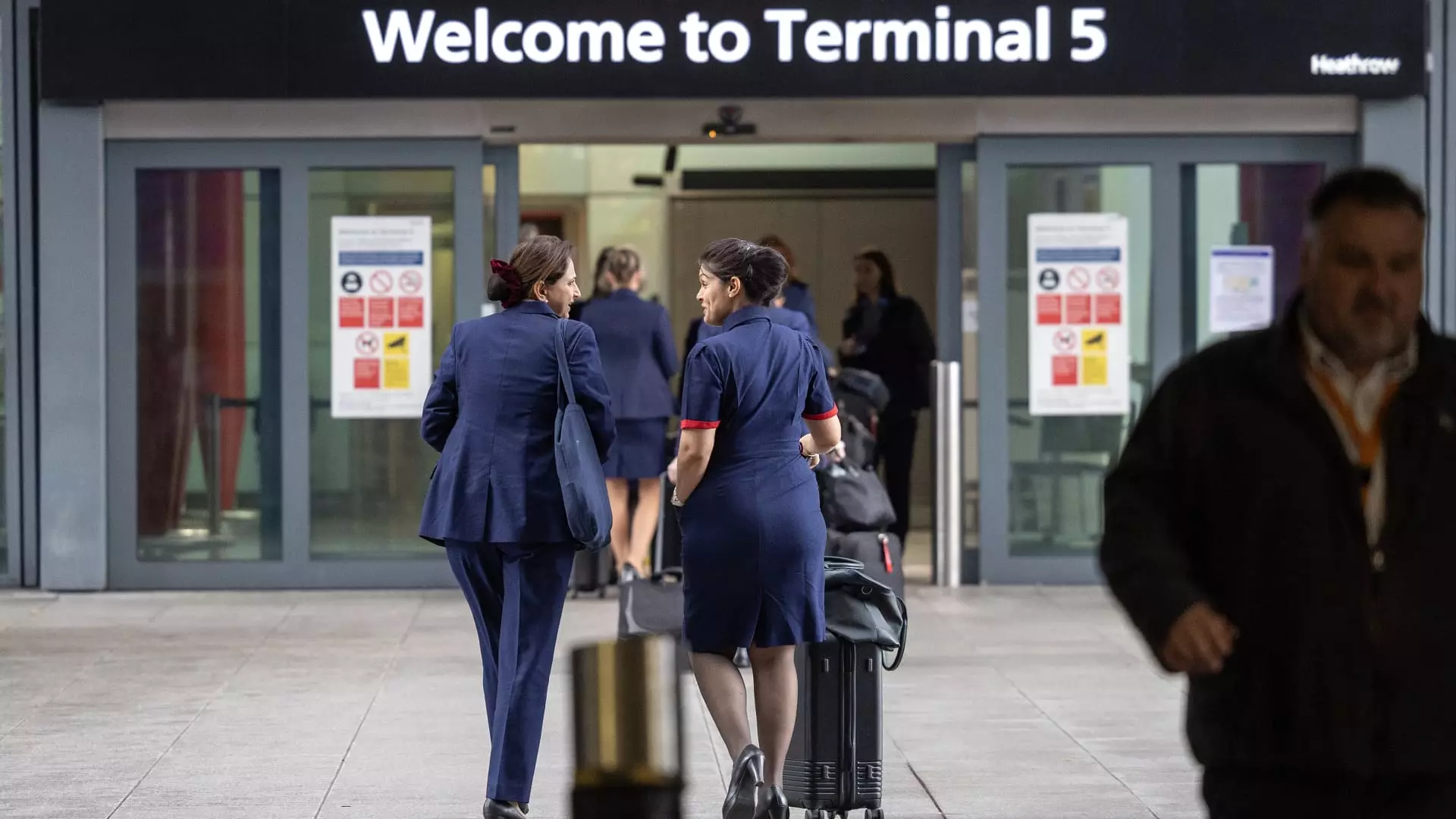In the chaotic world of air travel, few events can disrupt operations quite like an unexpected black swan incident. London’s Heathrow Airport, one of the busiest travel hubs in Europe, exemplifies how quickly things can go awry. After suffering a significant power outage on Friday, which led to over 800 flight cancellations, the airport faced immense challenges in restoring normal operations. While it reopened on Saturday, the ordeal underscores critical vulnerabilities in airport infrastructure and raises many questions regarding future preparedness.
Understanding the Blackout: Causes and Consequences
On a day that began like any other, travelers at Heathrow found themselves thrust into turmoil when a fire at a nearby electrical substation triggered a catastrophic power outage. The disruption is not merely a logistical headache but rather an event that points to weaknesses in the airport’s infrastructure. Notably, National Grid confirmed power has been restored, but the ordeal has triggered widespread scrutiny regarding the reliability of energy sources supporting vital infrastructure points. The incident, although not linked to foul play according to the Metropolitan Police, feels like a wake-up call highlighting how accidents of this nature can cascade into large-scale disruptions affecting countless lives.
Travel disruptions immediately led to massive backlogs of stranded passengers, prompting airlines to scramble in an attempt to recalibrate their schedules. British Airways faced the brunt of the fallout, with half of its flights canceled on Friday alone. Such extensive cancellations mean not just logistical challenges, but also significant financial implications for both the airline and impacted travelers.
Airlines React: A Test of Customer Service
In the face of adversity, how a company responds can often affect its reputation far longer than the immediate crisis itself. To mitigate the potential fallout, airlines like British Airways and Virgin Atlantic took proactive measures. British Airways optimistically stated that it would attempt to run approximately 85% of its scheduled flights the following day. However, they also cautioned their passengers about potential delays. Their commitment to customer service is exemplified by flexible rebooking options for those affected. Nevertheless, how airlines manage such crises will leave an indelible mark on customer loyalty.
The operational challenges are daunting, but the customer service imperative becomes even more apparent in these moments. When thousands of passengers are in limbo, how airlines communicate and offer solutions can define public perception. This incident may very well serve as a litmus test for the existing airport and airline collaboration during emergencies.
Lessons in Infrastructure: Planning for the Unthinkable
The incident raises profound questions about the adequacy of Heathrow’s infrastructure planning. Why does a major airport remain so heavily reliant on a single power source? Willie Walsh, the former CEO of British Airways and current leader of IATA, didn’t mince words, criticizing the airport for what he described as a “total planning failure.” In the modern age, where technology and contingency planning should be at the forefront, this incident is a stark reminder that lacking redundancy can lead to severe ramifications.
Resilience in infrastructure is a crucial concept that must transcend mere words. Airports, airlines, and regulatory bodies need to work in tandem, creating a layered approach to risk management that encompasses everything from energy supply webbing to contingency protocols during emergencies. Walsh’s call for a fair distribution of passenger care costs is poignant; it highlights the necessity for shared responsibility between infrastructure providers and airlines to ensure that passengers are not left stranded financially when system failures occur.
Moving Forward: A Collective Responsibility
The temporary reopening of Heathrow Airport marks a critical milestone in regaining normalcy after disruption. However, the incident’s broader implications resonate well beyond the immediate chaos of cancelled flights and stranded travelers. It sheds light on the need for a more robust dialogue surrounding risk mitigation strategies and public vulnerability to service disruptions.
While immediate recovery is essential, it is crucial for stakeholders to engage in meaningful discussions regarding infrastructure investment and resilience. The unfortunate fire may well serve as a catalyst for significant change, setting the stage for a more robust future for airport operations. In this evolving landscape of air travel, rendering services effectively while combatting uncertainties must remain key priorities. For travelers, the quest for reliable and smooth airport experiences will undoubtedly dictate their future travel choices.


Leave a Reply